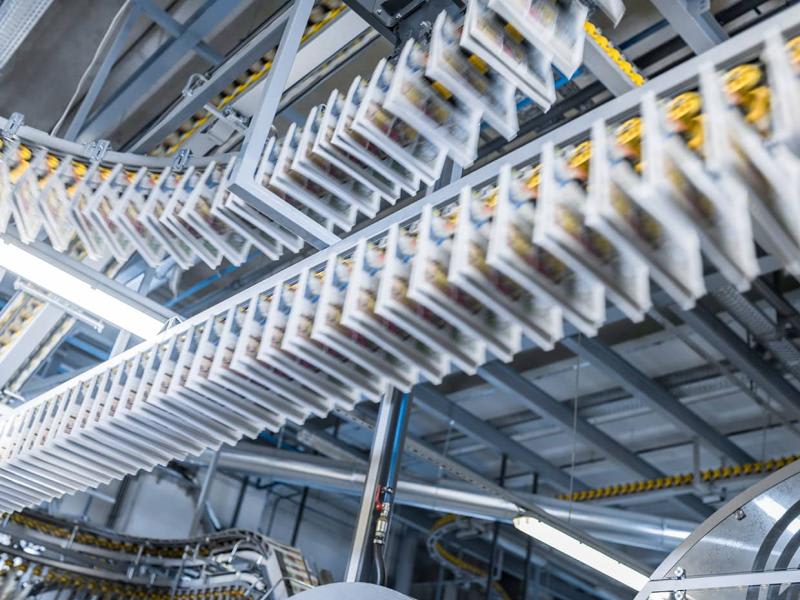AUTHORS
Coming from a science background, Simon Harcombe has worked in Research and Development (R&D) tax incentives for almost two decades. Having moved to RSM nine years ago, Harcombe has enjoyed developing a more diverse client base, including tech-focused startups, resources, engineering and defence manufacturing businesses. 
Being a science-orientated mind himself, Harcombe is excited by the work RSM is doing with SME manufacturers, to help grow Australia’s local capability.
“We want to see manufacturing progress in Australia and help clients compete and do well on a global scale,” Harcombe said.
“I think having experience in science and technology helps with the more technical conversations when we try and understand a particular business. People want to deal with people who understand their world to at least a reasonable level.”
RSM has a particularly strong manufacturing division, offering the following services:
- Strong accounting systems, processes & records – Accurate accounting is critical for Manufacturers. We have deep experience in manufacturing accounting, and advise on system, process and software solutions for all of your manufacturing specific accounting requirements
- Transaction Advisory – Through M&A lead advisory, debt advisory, due diligence, and technical services such as valuations, tax advisory and financial modelling we assist Manufacturers from growth and funding stages, through to business sale.
- Data Analytics – for insights into your manufacturing chain in areas such as business process improvement, customer growth, data management and more
- Transfer Pricing – Assistance for manufacturers with international related party sales and supply chains
- R&D – Access a potential R&D tax offset for clients applying new technology in their manufacturing processes or developing new or improved products, processes and equipment. R&D can be a critical funding source for innovative manufacturers, particularly those in start up and growth phases.
- Software – Offering advice on the right digital ecosystem for a manufacturer, including NetSuite and ERP solutions for manufacturers who need more sophisticated platforms for cost accounting, inventory and other manufacturing accounting requirements. We walk you through your digital journey.
- Management Reporting – customised management reporting and dashboarding, tailored to give manufacturing business owners and managers better business oversight and insights
R&D tax incentive considerations
The government’s flagship program to stimulate research and development activity begun in the 1980s as the R&D Tax Concession. In July 2011, the program was replaced by its current iteration, jointly administered by Industry Innovation and Science Australia and the Australian Tax Office (ATO).
The incentive offsets some of the costs to encourage Australian industry to undertake additional R&D activities. The offset helps to reduce the financial risks associated with industry R&D investment decisions, including uncertainty about the potential longer-term gains from developing products or a potential ‘spill over’ of knowledge to competitors.
The Senate recently passed the Labor Government’s $15 billion National Reconstruction Fund (NRF), which will mean more businesses will be able to access additional funding to invest in R&D, manufacturing and technology capabilities. The government seems to be focusing on renewable energy, medical science, resources, agriculture, defence and transport in the bill, which has been generally well received by industry as an initial step in the right direction to grow Australia’s innovation agenda.
Understanding the R&D claims process is becoming increasingly important for more manufacturing businesses. The government made changes to the tax offset in its budget announcement in 2021, basing the offset on a premium on top of the corporate tax rate. For R&D entities with aggregated turnover of less than $20 million, the refundable R&D tax offset is your corporate tax rate plus an 18.5 per cent premium.
For R&D entities with aggregated turnover of $20 million or more, the nonrefundable R&D tax offset is the corporate tax rate plus an incremental premium. The premium increments are based on the company's R&D Intensity, which is a percentage calculated as eligible R&D expenditure as a proportion of the total expenditure for the year. Harcombe explained what the change has meant for manufacturing over the past couple of years.
“There’s now more incentive to claim for R&D intensive businesses,” he explained.
“If you’re 2 per cent or less R&D intensity, the net R&D benefit is 8.5 per cent of the expenditure. For R&D expenditure greater than 2 per cent intensity, then it’s a 16.5 per cent net benefit. For companies that are in that mid-sized range, claiming the nonrefundable R&D tax offset, and are spending a reasonable amount on R&D and product development, they’re likely to get a significantly greater benefit than they would have prior to these changes.”
For manufacturers looking to make the most out of the R&D incentive scheme, it can be daunting and confusing to ascertain whether all the right steps are being followed. Harcombe explained that the first step RSM takes when working on an R&D tax project is to have a deep-dive conversation to deeply understand a particular businesses’ R&D.
“It’s really important to know that not only are you eligible, but you have the required records to support that. That’s records indicating eligibility and records in terms of the expenditure on those activities as well.”
Once an understanding of the business is solidified, RSM sits client side for the actual R&D claim.
“We typically assist with preparing the registration documentation that’s required for AusIndustry, ensuring that the client is happy with how their R&D has been described based on discussions and the supporting documentation that’s been supplied to us,” he noted.
Once the client has approved we register the project or projects with AusIndustry and go through a process of collecting expenditure information from the client, so we can prepare the R&D expenditure calculations for the company tax return.
Once that’s all completed, we provide all the documentation and essentially a summary of the R&D claim that’s included in the tax return.”
A pillar of RSM’s capabilities is to readily identify and manage R&D claim risk issues and provide mitigation plans. There are two regulators in Australia: AusIndustry and the ATO.
“The best way that we found to mitigate claim risk issues is to have regular catch ups with companies during the year,” Harcombe said.
“Rather than at the end of the year, it’s helpful to have quarterly meetings to ensure companies are doing everything they need to in terms of collecting their documentation, which helps them manage risks.”
Harcombe explained a big focus of the ATO at the moment is related party or associate transactions – businesses need to make sure that any expenditure issues are identified before the end of the financial year.
“There’s also a requirement for any associate expenditure to be paid during the financial year, so that companies can claim it. They can’t actually claim associate expenditure until it is paid. Specific rules like that can trip people up, which is why having a regular catch up with their R&D tax advisor is smart to mitigate these types of issues.”
As a result of the continued impact the COVID-19 pandemic had on the Australian economy, the Federal Government announced as part of the 2020-21 Budget a major overhaul to depreciation tax concessions. Previously, eligible businesses were able to deduct the cost of certain assets acquired, provided the asset cost was less than $150,000.
Not only has the Government provided almost all businesses with access to such concession, but eligible businesses are now able to deduct the cost of eligible depreciating assets with no cost limit, provided the asset is acquired from 7:30pm AEDT on 6 October 2020 and first used or installed ready for use by 30 June 2023.
“You might have a testing facility, or in a manufacturing setting, machinery or plant that had been purchased for pilot scale testing,” he said.
"If that’s being purchased and used before 30 June and is installed ready for use or being used for an R&D purpose, then depending on the extent of R&D use these costs could be eligible. "It’s important for businesses to have all the information available to them before they make purchasing decisions.”
FOR MORE INFORMATION
Please contact Simon Harcombe, should you have any queries in respect of, or wish to discuss, this topic. Alternatively, please contact your local RSM adviser.
Article source: Manufacturer's Monthly





